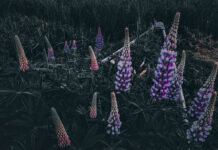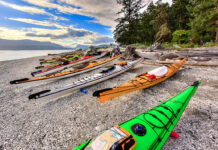As far as I know, I’m the only kid who liked the smell of mildew. When I wandered to the back of the garage, I’d get a whiff of what I called, “camping smell”. The source was an old army surplus canvas tent that had been packed away wet too many times.
I didn’t associate the fragrance with fungi of the genus Erysiphales brought on by excessive moisture, instead I smelled paddling trips on the Great Lakes and the coast of Maine, roasting marshmallows, and mucking around in tidepools.
As I write these words, I’m recovering from an injury that’s kept me out of kayaking for several months. When I wander into the basement and catch a whiff of salty neoprene I can feel the rise and fall of the hull. The Russian physiologist Ivan Petrovich Pavlov would be proud.
Pavlov won the Nobel Prize For Proving The Conditional Reflex. By ringing a bell at dinnertime, he showed that a sound—the bell alone—would trigger the digestive system in dogs. This discovery way back in 1904 made him, unknowingly at the time, the first to explain why being a gearhead is good for kayakers.
Like the bell causing the dog to drool, when my hands grip the shaft of my surf and rock-gardening paddle, I feel my torso muscles coil for a sprint through the rocks. The feel of that particular shaft tells my body to break down adenosine diphosphate and be ready for a sudden burst of exertion. And that’s just in my basement.
Most long-time kayakers have a love-hate relationship with gearheads. We malign folks who focus on gear more than skills, or who accumulate garages full of boats but don’t paddle them. Gear can be a barrier to the experience—more stuff to lug around, rely on, break, lose and spend money replacing—money that could otherwise be spent on paddling trips. But our friend Pavlov proved that the sensory experience of outdoor gear triggers how our body acts. And in kayaking, gear is our connection to the water.
Unlike rock climbers who grab tiny holds directly with what little skin is left on their fingertips, we feel the texture of water through the shape of the hulls of our boats and the stiffness of the blades and shafts of our paddles: our gear is our fingertips. When we’re off the water, that conditional reflex remains a link to the exhilaration, joy, and peace of paddling. Medical research shows that when we can’t be doing the real thing recalling time in nature is good for our blood pressure, creativity, and peace of mind.
But in ringing bells and feeding dogs, Pavlov missed something else about human beings. Really want the paddling juju? Grab a neoprene skirt or, if you’re really brave, a pair of booties. And take a whiff.
Another pair of pair of Nobel Laureates, Richard Axel and Linda Buck, won the the big prize in 2004 for figuring out how smell affects the brain.
Smells trigger the strongest reactions and memories of all our senses. Smells go directly into the hippocampus and amigdyala, parts of the brain related to immediate response, emotion, and memory. No wonder we love the smell of the sea or home cooking.
So, if we want to be primed for either action on the water, or memories of it, we’re doing it all wrong.
As a photographer, I trade in the visuaI. When I’m stuck in the city, I use sight cues to remind me of wilderness. A marine chart of my favorite island chain hangs on my wall and my screen saver cycles images from memorable trips. I use sounds too. My cell phone pings with birdsongs from remote canyons. Naturalists have been sold nature sounds relaxation tapes for decades. But these sights and sounds skip the all-important hippocampus and amygdala.
Since smell is the strongest trigger, let’s embrace it. I’m closing up my lavender and peach blossom Glade air freshener and searching online for a scent infuser loaded with the briny balm of tidepools and decaying seaweed with subtle hints of sweaty drytop. I’ll put it on my desk in the office.
When my coworkers complain, I’ll tell them that three Nobel Laureates told me to do it. Maybe they’ll get the hint and send me home to go kayaking. If not, I’ll break out the mildew, must and mold scented candles.
Illustration: Lorenzo Del Bianco









